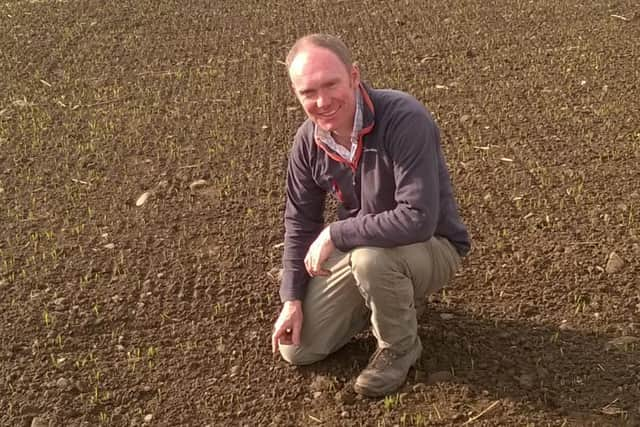Farmers urged to protect wheat yields
Agronomists have been warning growers that strong yields will be needed not only to maintain decent crop margins over prices paid for fertiliser this season, but also to generate enough income from current crops to cover potentially high fertiliser costs next year.
“Cereal growers are dealing with some big numbers at present,” said Nigel Scott, regional technical manager for agronomy firm, ProCam, “both in potential income from cereal crops but also in high fertiliser bills.
Advertisement
Hide AdAdvertisement
Hide Ad“This leaves little margin for error. If yields slip, lower incomes could mean less cash in the business for fertiliser next season – when fertiliser prices are expected to remain high.”


But while costs and moves towards integrated pest management (IPM) approaches might tempt growers to cut back on their fungicides sprays, protecting the crop remains critical.
Scott said that this was particularly true with flag leaves in winter wheat, as they contributed about half of overall yield, so close attention to detail to defend crops against disease for the rest of the season would be crucial: “Tailor fungicides to individual field risks rather than relying on blanket programmes,” he recommended.
He also warned that growers should keep a careful eye on varietal resistance ratings – and keep abreast of any changes: “History has shown how winter wheat variety resistance ratings to yellow rust can tumble over a year,” he said, “But Septoria tritici resistance ratings for a number of varieties on the AHDB Recommended List (RL) have also fallen since last season, and in many cases these reductions occurred after decisions to grow these varieties had already been made.”
For up-to-date information, he recommended that growers should look at the one-year Septoria tritici resistance ratings on the RL, rather than using their three-year ratings, adding: “Even then, take into account other disease risk factors.”
He also advised that growers shouldn’t overlook the effects which drilling date could have on disease risk: “We know early drilling significantly increases Septoria tritici risk. But work at our Yorkshire trials hub has shown that even a variety with strong Septoria tritici resistance can suffer infection if drilled in September.”
Scott said that even relatively resistant varieties could suffer a 1 t/ha penalty if drilled in September compared with October: “For crops drilled before late October, you could consider their Septoria tritici resistance as being one or more points lower than their RL rating,” he added.
“And as tempting as it may be to save money by reducing fungicide doses if you have already spent a lot on fertiliser, dose rate has a massive impact on the duration of protection from a fungicide and on the level of curative activity it provides against infection.”
Comments
Want to join the conversation? Please or to comment on this article.